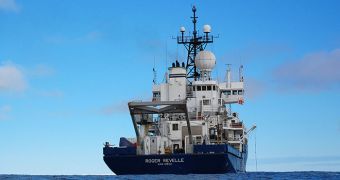A new research field campaign is set to begin in the Indian Ocean next month. An international collaboration of scientists will use a variety of tools and techniques to determine the extent to which this large body of water is promoting climate phenomena whose effects span the globe.
This endeavor is known as the Dynamics of the Madden-Julian Oscillation (DYNAMO) initiative. During this study, investigators will use a combination of ships, aircraft, radars, mooring, computer models and other scientific techniques to reach their objective.
One of the main goals is to determine how tropical weather patterns that form in the Indian Ocean move along the Equator, bearing east, producing intricate effects all around the world. Once the 6-month mission is complete, experts will have more insight into how planetary systems are connected.
In addition, researchers will gain access to new data they can include in climate models, as well as in long-range weather forecasts. The efficiency and precision of seasonal outlooks will also be drastically improved, the research team argues.
In the end, all these models will be merged together in larger computer simulations, whose goal is to provide clear data on how global warming and climate change will manifest themselves over the course of this century, and beyond.
The international name for DYNAMO is the Cooperative Indian Ocean Experiment on Intraseasonal Variability in the Year 2011 (CINDY2011) initiative. The effort is being led and coordinated by scientists with the Japan Agency for Marine-Earth Science and Technology.
For 2011, the team plans to focus its efforts on the Madden-Julian Oscillation (MJO), a weather pattern disturbance occurring along the tropics. The event originates in the equatorial parts of the Indian Ocean, and past studies have shown that it is produced once every one to three months.
When the MJO occurs, hurricane activity in the Gulf of Mexico and the northeast Pacific Ocean increase significantly, hinting at a connection that scientists have yet to understand fully. Additionally, the oscillation also affects the onset of El Niño.
Another effect is that the western coasts of North America are drenched in more torrential rainfalls. The mechanisms through which these connections are made are still mysterious, but the DYNAMO collaboration plans to fix that.
The US component of the international collaboration is supported by the US National Science Foundation (NSF), the Department of Energy, the Office of Naval Research, the National Oceanic and Atmospheric Administration, and the National Aeronautics and Space Administration.

 14 DAY TRIAL //
14 DAY TRIAL //